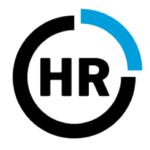WORKPLACE FLEXIBILITY
As we see baby boomers retiring in large numbers, the talent pool available to most employers will come from the over 80 million Millennials and Gen Z workers that are entering the workforce.
WORKPLACE TRENDS #9: WORKPLACE FLEXIBILITY
 Kirk Herring
Kirk Herring
HR Project Manager | Sr. Recruiter
UNLIMITED VACATION
The United States is the only country in western culture that does not require employers to offer guaranteed vacation time. Our Western European counterparts have government mandates that require employers to offer a minimum of 4 weeks’ vacation to both full and part-time employees.
So why not stand and attract the best talent, and offer unlimited vacation? Although unlimited vacation policies are rare in corporate America (currently only 2-3%), the perk is starting to take hold like wildfire outside of Silicon Valley where the trend began. Offering “unlimited vacation as long as you get your work done” may sound altruistic, but it will set you apart from other employers, and has a financial upside for you.
How, you ask? When employers stop handing out a set amount of vacation days, they no longer have to pay out unused vacation accrual when an employee quits or gets laid off. Employers can eliminate carrying vacation liability on their books, and in the long-run, increase savings and productivity. A happy rested employee works better, consistently meets or exceeds goals, and ultimately works harder to get the job done.
FLEXIBLE WORK HOURS
At the end of day, the most important thing is to see an employee being productive. But personal life-needs don’t always fit in a traditional 8 – 5 workday. While achieving the same overall time commitment to work, flexible hours that shift an employee out of heavy commute hours can greatly improve workplace happiness.
Best Practice & Benefits – Offer daily flex, summer flex, variable flex, and day of the week flex. Require core hours where the employee needs to be present, but allows customized schedules for each employee.

JOB-SHARING
Rather than dismissing a talented candidate because of limited availability, or eliminating a position all together, consider creating or converting a full-time position that is shared by two people.
Best Practice & Benefits – Brings broader experience and skills to the position, allows continued job coverage, and promotes teamwork. Consider alternate week scheduling between the two employees, or sharing and overlapping workdays so that the job sharers can stay on track and collaborate.
COMPRESSED WORKWEEKS
There are many variations of this concept, but many employers need to stop being afraid to have employees absent for extended periods of time. Although this is similar to offering flexible work hours, compressed workweeks offer employees longer periods of rest, and have shown to promote greater productivity when they are working during the quieter times of the day, and have longer times to rest and refuel.
Best Practice & Benefits – Provides more days off and decreases commute time. Consider a 4-day, 10 hour workweek, a 3-day, 12 hour workweek, a 4.5 day workweek, or a 9-day, 80 hour work period.
TELECOMMUTING
Again, this is not a new concept, but one that has traditionally been treated as a perk for “trusted or valued” employees. But the current talent pool places a significant value on trust – you trust them to get the work done, and they trust you have their best interest at heart. By opening up this perk to all workers, particularly incoming more socially-mobile talent, you are instinctively communicating that you trust your employees to get their work done regardless of what location they work from.
Best Practice & Benefits – This expands your labor pool geographically, reduces office space, reduces or eliminates commute, and decreases work-related spending. Consider offering telecommuting to workers with positions for which it is feasible, at least one day a week, and grow the program if you see that productivity increases.
TIME MANAGEMENT
As part of offering workplace flexibility, instituting guidelines on things like acceptable meeting times, and allocating blocks of undistracted time for greater work product, can go a long way in improving the happiness of your employees.
Best Practice & Benefits – Establish blocks of time by a workgroup that are regularly set as “meeting-free”. Allow for uninterrupted blocks of time for concentrated work. Consider to reduce or eliminate meetings that start early in the morning or late in the afternoon – this alleviates rush-hour stress and promotes use of alternate forms of transportation.
The reality is, that as long as an employee meets or exceeds their job expectations, workplace flexibility can be better for talent retention, happiness, and ultimately your bottom line.

For over 35 years, HR Options® has provided highly personalized solutions aimed at identifying and filling supplemental human resource needs for clients throughout the U.S. and Canada. Whether augmenting your HR department or serving as a complete outsourced solution, our suite of services and experienced professionals will help you navigate through complex and ever-evolving employment regulations in the US and Canada.
GET EVERY NEW COVID-19 BEST PRACTICE RESOURCE
Receive exclusive access to our library of COVID-19 resources.
RELATED ARTICLES
WORKPLACE TRENDS #8: ENERGIZE YOUR WORKSPACE
WORKPLACE TRENDS #9: WORKPLACE FLEXIBILITY
WORKPLACE TRENDS #10: (RE) INVENTING HR
OTHER ARTICLES
CANADIAN EMPLOYMENT LAW FOR AMERICAN EMPLOYERS
EMPLOYEE HIRING PROCESS: THE CANADIAN WAY
THE DUTIES AND GOALS OF AN HR DEPARTMENT
LET'S CHAT ABOUT YOUR HR OPTIONS
Chat below or call (800) 777-8944 for an immediate response.